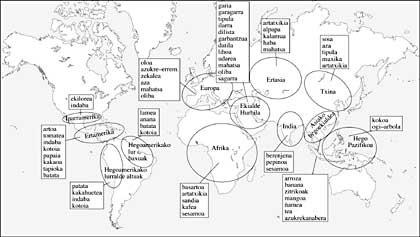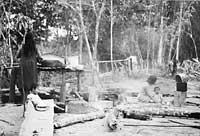Decaffeinated coffee cultivation
1998/06/01 Elhuyar Zientzia Iturria: Elhuyar aldizkaria
This summer, in a Hawaiian greenhouse, the first coffee plant to produce caffeine-free beans will be planted. If all goes well, these specimens should not be chemically decaffeinated, as has been done so far.
The researcher at the University of Manoa, John Stiles, has been able to develop this plant in the laboratory, but now he will have to do the test in the greenhouse and, as he has recognized, is wishing to taste the new coffee.

After identifying the gene that governs caffeine production, research has eliminated and nullified its work. To do this, a bacterium has been used that, thanks to the bacterium Agrobacterium tumefaciens, in the embryonic tissues already the function of the gene is annulled, so then the same happens throughout the plant.
In this way, this plant produces only 3% of the conventional caffeine, that is, 3% is decaffeinated. There are wild coffees without caffeine, but this time only one commercial species, the Coffea Arabica, has been eliminated. But do not forget that 60% of the coffee consumed is of this type.
The researcher said that by chemically removing caffeine from conventional coffee, it loses other characteristics besides caffeine, so she prefers the decaf specimens of the new plant after its genetic transformation.

Gai honi buruzko eduki gehiago
Elhuyarrek garatutako teknologia





